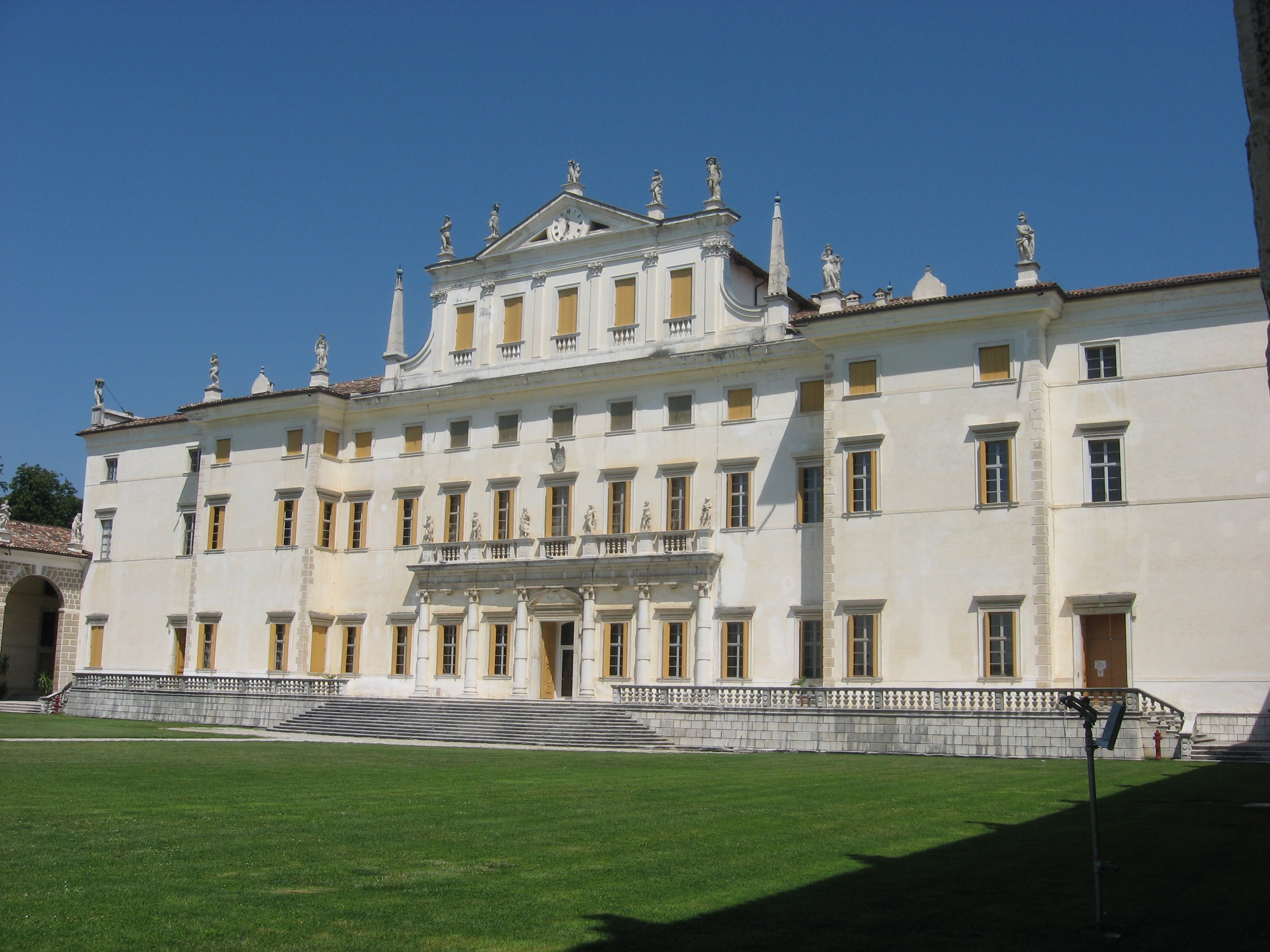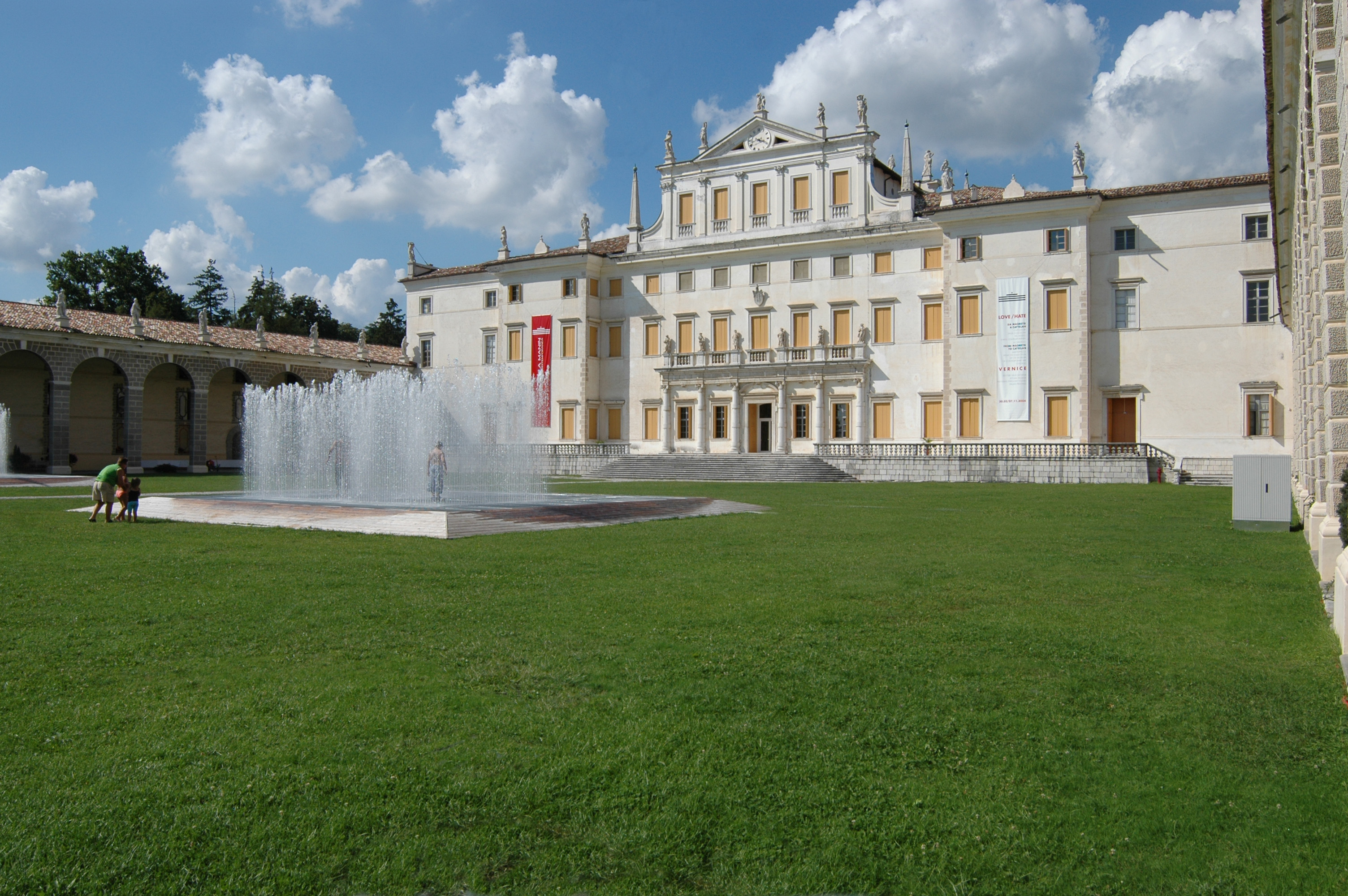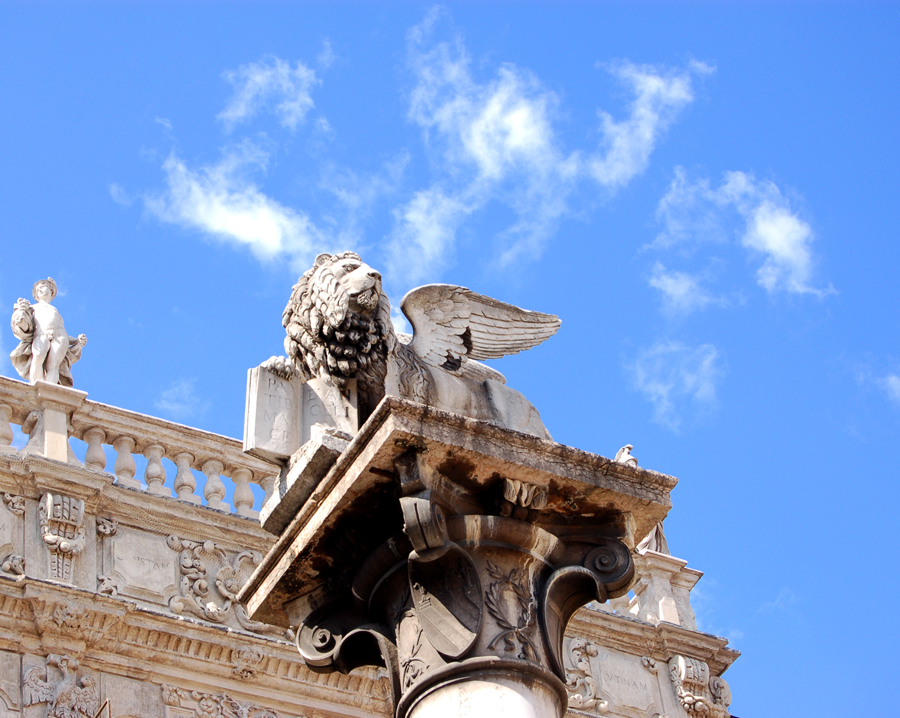|
Ludovico Manin
Lodovico Giovanni Manin (; ; 14 May 1725 – 24 October 1802) was a Venetian politician, patrician, and the 120th and last Doge of Venice. He governed the Venetian Republic from 9 March 1789 until its fall in 1797, when he was forced to abdicate by Napoleon Bonaparte. Biography Early life Lodovico Manin was the eldest of five sons of Lodovico III Alvise (1695–1775) and Lucrezia Maria Basadonna, the great-granddaughter of cardinal Pietro Basadonna. He attended the University of Bologna and was a boarder at the noble College of St. Xavier. Manin printed propositions of natural law, which he studied during this period. When Manin began public life he was quickly noticed for his generosity, honesty, kindness, and wealth. He married Elisabetta Grimani (d 1792) on 14 September 1748; he received a dowry of 45,000 ducats. Elisabetta had been educated in a monastery in Treviso and was in poor health since childhood. She did not give birth to any children. At 26 he was ele ... [...More Info...] [...Related Items...] OR: [Wikipedia] [Google] [Baidu] |
Bernardino Castelli
Bernardino Castelli (15 June 1750, Arsiè - 24 February 1810, Venice) was an Italian painter of portraits and religious figures. Biography He displayed artistic talent at an early age, taking his first lessons in Feltre from a local artist named Giovanni D'Antonio and helping to decorate the Villa Franzoia in Quero, Veneto, Quero. His work there impressed the Canon, Alvise Franzoia, who took him to Treviso and presented him to Bishop who offered to take him under his protection and helped him to continue his studies.Brief biography @ the Treccani, Enciclopedia Treccani. His first major work was a portrait of the Bishop, which brought requests for more portraits by other prelates in the area and launched him on a career as a portrait painter. He also did a painting of Lawrence Giustiniani, Saint Lorenz ... [...More Info...] [...Related Items...] OR: [Wikipedia] [Google] [Baidu] |
Napoleon I Of France
Napoleon Bonaparte (born Napoleone di Buonaparte; 15 August 1769 – 5 May 1821), later known by his regnal name Napoleon I, was a French general and statesman who rose to prominence during the French Revolution and led Military career of Napoleon, a series of military campaigns across Europe during the French Revolutionary and Napoleonic Wars from 1796 to 1815. He led the French First Republic, French Republic as French Consulate, First Consul from 1799 to 1804, then ruled the First French Empire, French Empire as Emperor of the French from 1804 to 1814, and briefly again in 1815. He was King of Italy, King of Kingdom of Italy (Napoleonic), Italy from 1805 to 1814 and Protector of the Confederation of the Rhine, Protector of the Confederation of the Rhine from 1806 to 1813. Born on the island of Corsica to a family of Italian origin, Napoleon moved to mainland France in 1779 and was commissioned as an officer in the French Royal Army in 1785. He supported the French Rev ... [...More Info...] [...Related Items...] OR: [Wikipedia] [Google] [Baidu] |
Cyrus The Great
Cyrus II of Persia ( ; 530 BC), commonly known as Cyrus the Great, was the founder of the Achaemenid Empire. Achaemenid dynasty (i. The clan and dynasty) Hailing from Persis, he brought the Achaemenid dynasty to power by defeating the Median Empire and embracing all of the previous civilized states of the ancient Near East, expanding vastly across most of West Asia and much of Central Asia to create what would soon become the List of largest empires#Timeline of largest empires at the time, largest empire in history at the time. The Achaemenid Empire's greatest territorial extent was achieved under Darius the Great, whose rule stretched from Southeast Europe in the west to the Indus Valley in the east. After absorbing the Median Empire, Cyrus conquered Lydia and eventually the Neo-Babylonian Empire, granting him control of Anatolia and the Fertile Crescent, respectively. He also led a major expedition into Central Asia, where his army brought "into subjection every nation wit ... [...More Info...] [...Related Items...] OR: [Wikipedia] [Google] [Baidu] |
Villa Manin
Villa Manin () is a Venetian villa A villa is a type of house that was originally an ancient Roman upper class country house that provided an escape from urban life. Since its origins in the Roman villa, the idea and function of a villa have evolved considerably. After the f ... located in the ''comune'' of in Codroipo, Friuli-Venezia Giulia, in northeastern Italy. It was the private, country residence of the last Doge of Venice, Lodovico Manin. Napoleon Bonaparte and Joséphine de Beauharnais lived there for about two months in 1797. Many negotiations for the Treaty of Campoformio between French First Republic, Napoleonic France and the Habsburg monarchy, Habsburg Austria were conducted here and the treaty was signed at the Villa on 17 October 1797. The Villa Manin was restored in the mid and late 1960s after it, together with about 18 acres of parkland, was sold to the Region of Venezia Friuli Giulia by the Manin family for a nominal sum. Since then, it has hosted ... [...More Info...] [...Related Items...] OR: [Wikipedia] [Google] [Baidu] |
Pope Pius VI
Pope Pius VI (; born Count Angelo Onofrio Melchiorre Natale Giovanni Antonio called Giovanni Angelo or Giannangelo Braschi, 25 December 171729 August 1799) was head of the Catholic Church and ruler of the Papal States from 15 February 1775 to his death in August 1799. Pius VI condemned the French Revolution and the suppression of the Catholic Church in France that resulted from it. French troops commanded by Napoleon Bonaparte defeated the Papal army and occupied the Papal States in 1796. In 1798, upon his refusal to renounce his temporal power, Pius was taken prisoner and transported to France. He died eighteen months later in Valence. His reign of more than twenty-four years is the fifth-longest in papal history. He was also the longest-ruling pope of the Papal States. Biography Early years Giovanni Angelo Braschi was born in Cesena on Christmas Day in 1717 as the eldest of eight children to Count Marco Aurelio Tommaso Braschi and Anna Teresa. His uncle was Cardinal Giov ... [...More Info...] [...Related Items...] OR: [Wikipedia] [Google] [Baidu] |
Saint Mark's Basilica
The Patriarchal Cathedral Basilica of Saint Mark (), commonly known as St Mark's Basilica (; ), is the cathedral church of the Patriarchate of Venice; it became the episcopal seat of the Patriarch of Venice in 1807, replacing the earlier cathedral of San Pietro di Castello (church), San Pietro di Castello. It is dedicated to and holds the Relic#Christianity, relics of Mark the Evangelist, Saint Mark the Evangelist, the patron saint of the city. The church is located on the eastern end of Piazza San Marco, Saint Mark's Square, the former political and religious centre of the Republic of Venice, and is attached to the Doge's Palace. Prior to the Fall of the Republic of Venice, fall of the republic in 1797, it was the chapel of the Doge of Venice, Doge and was subject to his jurisdiction, with the concurrence of the procurators of Saint Mark for administrative and financial affairs. The present structure is the third church, begun probably in 1063 to express Venice's growing civic ... [...More Info...] [...Related Items...] OR: [Wikipedia] [Google] [Baidu] |
Procurator De Ultra
The office of Procurator of Saint Mark ( Venetian: Procurador de San Marco) was one of the few lifetime appointments in the government of the Venetian Republic and was considered second only to that of the doge in prestige. Da Mosto, ''L'Archivio di Stato di Venezia…'', p. 25 It was routinely occupied by nobles belonging to the most influential families and typically represented the climax of a distinguished political career, although it was often an intermediate position prior to election as doge.In the 1663 edition of ''Venetia città nobilissima et singolare...'', Martinioni records 40 procurators who, beginning in 1275, were subsequently elected doge. For the complete list, see Sansovino and Martinioni, ''Venetia città nobilissima et singolare...'', 1663 edn., pp 299–300. Origins The office of procurator of Saint Mark originated in the ninth century with a single procurator , nominated to assist the doge in the administration of the Church of Saint Mark, the duc ... [...More Info...] [...Related Items...] OR: [Wikipedia] [Google] [Baidu] |
Brescia
Brescia (, ; ; or ; ) is a city and (municipality) in the region of Lombardy, in Italy. It is situated at the foot of the Alps, a few kilometers from the lakes Lake Garda, Garda and Lake Iseo, Iseo. With a population of 199,949, it is the second largest city in Lombardy and the fourth largest in northwest Italy. The urban area of Brescia extends beyond the administrative city limits and has a population of 672,822, while over 1.5 million people live in its metropolitan area. The city is the administrative capital of the Province of Brescia, one of the largest in Italy, with over 1.2 million inhabitants. Founded over 3,200 years ago, Brescia (in antiquity Brixia) has been an important regional centre since pre-Roman times. Its old town contains the best-preserved Ancient Rome, Roman public buildings in northern Italy and numerous monuments, among these the medieval castle, the Old Cathedral, Brescia, Old and New Cathedral, Brescia, New cathedral, the Renaissance ''Piazza ... [...More Info...] [...Related Items...] OR: [Wikipedia] [Google] [Baidu] |
Verona
Verona ( ; ; or ) is a city on the Adige, River Adige in Veneto, Italy, with 255,131 inhabitants. It is one of the seven provincial capitals of the region, and is the largest city Comune, municipality in the region and in Northeast Italy, northeastern Italy. The metropolitan area of Verona covers an area of and has a population of 714,310 inhabitants. It is one of the main tourist destinations in Northern Italy because of its artistic heritage and several annual fairs and shows as well as the Opera, opera season in the Verona Arena, Arena, an ancient Ancient Rome, Roman Amphitheatre, amphitheater. Between the 13th and 14th centuries, the city was ruled by the Scaliger, della Scala family. Under the rule of the family, in particular of Cangrande I della Scala, the city experienced great prosperity, becoming rich and powerful and being surrounded by new walls. The della Scala era is preserved in numerous monuments around Verona. Two of William Shakespeare's plays are set in Ve ... [...More Info...] [...Related Items...] OR: [Wikipedia] [Google] [Baidu] |
Vicenza
Vicenza ( , ; or , archaically ) is a city in northeastern Italy. It is in the Veneto region, at the northern base of the Monte Berico, where it straddles the Bacchiglione, River Bacchiglione. Vicenza is approximately west of Venice and east of Milan. Vicenza is a thriving and cosmopolitan city, with a rich history and culture, and many museums, art galleries, piazzas, villas, churches and elegant Renaissance ''Palazzo, palazzi''. With the Palladian villas of the Veneto in the surrounding area, and his renowned Teatro Olimpico ("Olympic Theater"), the "city of Palladio" has been listed as a UNESCO World Heritage Site since 1994. Vicenza had an estimated population of 115,927 and a metropolitan area of 270,000 in 2008. Vicenza is the third-largest Italian industrial centre as measured by the value of its exports, and is one of the country's wealthiest cities, in large part due to its textile and steel industries, which employ tens of thousands of people. Additionally, abou ... [...More Info...] [...Related Items...] OR: [Wikipedia] [Google] [Baidu] |
Treviso
Treviso ( ; ; ) is a city and (municipality) in the Veneto region of northern Italy. It is the capital of the province of Treviso and the municipality has 87.322 inhabitants (as of December 2024). Some 3,000 live within the Venetian walls () or in the historical and monumental center; some 80,000 live in the urban center while the city hinterland has a population of approximately 170,000. The province is home to the headquarters of clothing retailer Benetton Group, Benetton, Sisley, Stefanel, Geox, Diadora and Lotto Sport Italia, appliance maker De'Longhi, and bicycle maker Pinarello. Treviso is also known for being the original production area of Prosecco wine and radicchio, and is thought to have been the origin of the popular Italian dessert tiramisù. Names and etymology The first mention of Treviso, albeit indirect, can be found in the third book of the Natural History (Pliny), Naturalis historia by Pliny the Elder, where the «Fluvius Silis ex montibus Tarvisani ... [...More Info...] [...Related Items...] OR: [Wikipedia] [Google] [Baidu] |
Ducats
The ducat ( ) coin was used as a trade coin in Europe from the later Middle Ages to the 19th century. Its most familiar version, the gold ducat or sequin containing around of 98.6% fine gold, originated in Venice in 1284 and gained wide international acceptance over the centuries. Similarly named silver ducatons also existed. The gold ducat circulated along with the Florentine florin and preceded the modern British pound sterling. Predecessors The word ''ducat'' is from Medieval Latin ''ducalis'' = "relating to a duke (or dukedom)", and initially meant "duke's coin" or a "duchy's coin". The first issue of scyphate billon coins modelled on Byzantine ''trachea'' was made by King Roger II of Sicily as part of the Assizes of Ariano (1140). It was to be a valid issue for the whole kingdom. The first issue bears the figure of Christ and the Latin inscription ''Sit tibi, Christe, datus, quem tu regis iste ducatus'' (meaning "O Christ, let this duchy, which you rule, be dedica ... [...More Info...] [...Related Items...] OR: [Wikipedia] [Google] [Baidu] |









